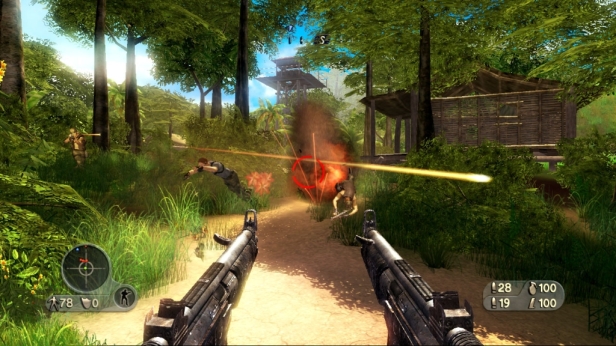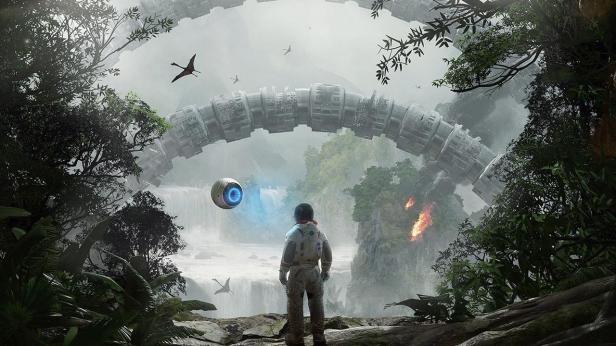Perhaps the title is a bit on the nose, but for German developer Crytek, the pun holds more merit than it would seem. Since Crytek’s rise to fame with the release of its main series Crysis in 2007, prospects going forward in 2017 are grim. They were pioneers to the open-world style of game, but now they’re struggling to keep open the doors of its main studio in Frankfurt, Germany.
In recent news, Eurogamer reported in early February that the developer had laid off more staff following its restructuring and sale of branch studios in Budapest (Hungary), Sofia (Bulgary), Seoul (South Korea) and Shanghai (China). This time, those laid off included 15 employees from its Marketing and Publishing team in its Frankfurt studio.
Months prior in December 2016, Polygon had also reported that employees from within Crytek had taken to numerous online outlets such as Reddit and Twitter to voice concerns over several months of unpaid wages, a problem the developer had faced also in 2014. It was later on December 20th that Crytek provided an official press release that confirmed the company’s ‘restructuring’ to focus on its ‘core strengths.’ The same press release confirmed the aforementioned branch studios would be closed and sold likely in an attempt to keep within budget constraints and help the developer stay afloat, as was the situation in 2014 when wages were delayed in an attempt to keep the developer from bankruptcy.
Crytek was a studio that pushed the boundaries of graphical fidelity with its proprietary CryENGINE software. Remarked as a benchmark for ‘stunning visuals’ and I would say a pioneer in the Open World-FPS genre pushing for graphics, Crysis on PC was a trend setter without realizing it was one. The multiple approaches to singular encounters and the ability to traverse wide open spaces that felt near limitless (apart from invisible boundaries guarded by Shark infested waters) are the trademark of the open world aspect of gaming the current industry is enamoured with. To note, their work began before the creation of Crisis with a familiar title now owned by Ubisoft: Far Cry.

Crytek was founded in 1999 and its first game titled X-Isle would later become Far Cry which would release in 2004. With its release, many accolades would follow including awards such as ‘Best Level Design’ and ‘Best Graphics’ awarded by the Game Developers Conference (GDC) in 2004. At its roots, audiences could see the open level design and graphical fidelity that Crytek was capable of. In 2006 Crytek would sell the intellectual rights of the series to Ubisoft who had published the original game. All games in the series have since been developed by Ubisoft under its own proprietary engine.
In November, Crytek released their newest entry Crysis to critical acclaim on PC. Special attention was given to the steep hardware requirements necessary to play the title which is still considered a benchmark for PC gamers. For PC gaming and the FPS genre as a whole, it was making great waves in 2007 with publications such as PC Gamer and news aggregates such as IGN and GameSpot praising it was one of the best PC titles to date and Editors’ Choice for 2007.
Crysis was not without its accolades, but weak early sales numbers and its high piracy percentage gave cause for concern for the longevity of the title and the studio as a whole. It was not until mid-2008 until Crytek would announce that they had begun to profit off their title. A far away cry compared to other developers which would normally see recouped funds in the first hours or even weeks upon release.
Crytek’s main cause for concern was a spectre that hung over PC gaming (and in some ways, still continues to): Piracy. And that concern definitively influenced the choice to finally move its main series onto console platforms. And it was here where the slops began getting far more slippery.
In 2009, Crytek had announced their latest updated engine, CryENGINE 3 and that it was focused towards developing for the Playstation 3, Xbox 360, and PC space. Crytek’s follow-up, Crysis 2, would be developed on their latest engine. Its release date was March 2011. Yet months before the game’s release a leaked beta version of the game containing the entire single-player campaign and some multiplayer components was let out in the wild. Crytek met the act with a statement of disappointment, once again calling piracy its culprit for stymied success.

When the game released officially in March of 2011, Crysis 2 was met with a degree of critical acclaim that fell short of its predecessor. It was tout for, you guessed it, its graphical fidelity and attention to detail. The destroyed ruins of New York City (which seems to be destroyed regularly enough that it’s now an all together familiar scene) was gripping and a marvel. And truly, it was having played the game on Playstation 3 and PC at the time of its release. Yet for all the moment to moment visual prowess the game seemed to exude, gone was open world style of the game in favour of more linear encounters. The game launched with less options to fiddle around with graphics compared to its predecessor and the gameplay felt way too familiar with the military shooters releasing around it. By June of 2011 EA, who published the title, revealed in a quarterly fiscal report that Crysis 2 had sold 3 million units to date.
Announced in 2012, Crytek would release Crysis 3 as a follow-up to their popular main series. Following the criticisms of their previous title, Crytek shifted their focus to better cater to the audiences that felt alienated from the release of Crysis 2 and wanted something more reminiscent of their 2007 title. What resulted on the game’s release in February 2013 was a retelling of similar praises and complaints the developer faced in 2011. Graphics were splendid and the consistent frame rates created a largely enjoyable experience. While a technical marvel, Crytek could not embrace the open world trend they once pioneered and created another pseudo-linear military shooter, except with slightly bigger spaces in contrast to their 2011 release. Fans immediately saw through it, and once again called back to their beloved 2007 title.
Sales reflected that sentiment, as sale targets were not met and Crytek’s CEO announced his disappointment as such. Yet also in 2012, it is important to note that Crytek had shifted its company focus going forward to the ‘Free-to-Play’ space, or what the current market understands as ‘Freemium.’
Also to note was Crytek’s involvement with Xbox One exclusive Ryse: Son of Rome, which Crytek had also developed. Needless to say, it followed similar stories of graphical prowess marred by forgettable gameplay. Crytek never revealed official sales figures for the game, but remarked that Ryse failed to meet expectations.
In 2014 Crytek danced ever so closely with bankruptcy, having to withhold wages in order to keep afloat. As a result, branch studios and intellectual properties (Including Homefront: Revolution) were sold off in order to keep the doors open. Crytek CEO Cevat Yerli revealed reasoning behind their actions in an exclusive interview with Eurogamer regarding decisions leading up to Crytek’s brush with insolvency.
Following Crytek’s troubled releases and unstable financial situation came 2016. Having been burned in the console space and Free-to-Play titles barely capable of keeping the developer afloat, Crytek looked to newer and untested waters. With the reveal and release of Sony Playstation VR, Crytek was one of many developers interested in the technology. This interest sparked the creation of their latest experience — Robinson: The Journey. Crytek had also developed another title called The Climb on Oculus Rift yet little is spoken about the title’s success. Fancy that.
Having released in October of 2016, Playstation VR released to limited appeal. Having brought down very high sales expectations in part due to hardware development issues, PlayStation VR was a market with limited consumers. So how did Crytek’s latest experience fair on this small market?

Even without Crytek’s official statement on sales and reception (of which the game scored lowly), monthly updates on Playstation Blog, displaying top downloads every month on respective Sony consoles, revealed the popularity of Crytek’s latest title. Apart from the month of November 2016, where Robinson: The Journey placed 3rd overall for VR downloads, Crytek’s latest FPS-Space exploration title could not break the ‘Top 10’ List for the respective months of October, December, and January 2017. As indicated by Playstation Blog, in the first three month period of Playstation VR’s availability, Robinson: The Journey did not place in the ‘Top 10 Most Downloaded’ for the VR section.
And here we are in 2017, caught up to Crytek’s current status once more — Unable to pay wages, and facing major restructuring. Compared to its height of popularity in 2007, this last decade has not been kind on the Germant studio. Perhaps caught behind the shadow of its own success, Crytek is facing a losing battle while continuing to ride on the back of its new ‘Free-to-Play’ model. Going forward, Crytek’s upcoming title Arena of Fate, a Free to Play MOBA, could be a last indicator of whether the developer can bounce back long enough to continue game development, or shift its entire focus on refining and licensing its proprietary engine.
